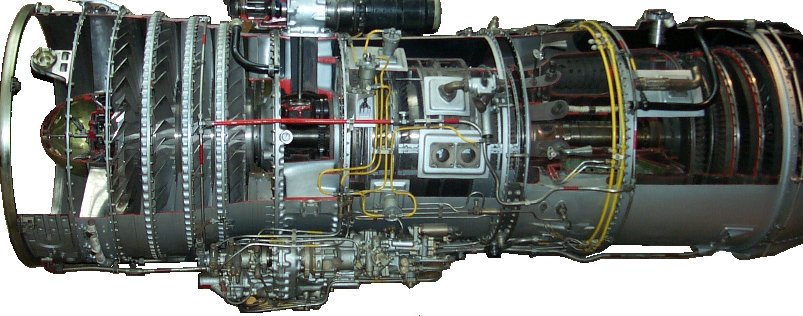The Powerhouses of Aviation: Turbojet, Turbofan, and Turboprop Engines
In aviation, precision and power work in harmony. Here, technological wonders soar to new heights for passengers. Every airplane has an engine at its core, which turns fuel into the incredible force of thrust. This article explores the three primary types of aviation engines: turbojet, turbofan, and turboprop engines. These technical wonders each have special applications and design elements that meet the wide range of demands of the aviation sector.
Turbojet Engine: Unleashing the Fury of Speed
Let’s start our voyage with the turbojet engine, the pinnacle of power and simplicity. The engine’s three main parts are the compressor, combustion chamber, and turbine. The entering air is compressed by the compressor so that it can be used for burning. After the compressor compresses the air, it combines with fuel in the combustion chamber and ignites, producing a raging conflagration. The engine’s incredible velocity propels the airplane forward with incredible force as it releases the hot gasses that result through a nozzle.
One of the most well-known features of turbojet engines is their extraordinary speed. These are the preferred engines for supersonic aircraft, where velocity is crucial. These powerful, streamlined aircraft carve into the sky, leaving awe in their wake. Turbojet engines are the epitome of power and speed in military planes and experimental aircraft.
Turbofan Engine: The Perfect Balance of Efficiency and Thrust
As we ascend further into aviation engines, we encounter the turbofan engine, a marvel of efficiency and innovation. Building upon the foundation of the turbojet engine, the turbofan engine introduces a crucial addition: the fan. Positioned at the front of the engine, the fan draws in a substantial amount of air, which bypasses the combustion chamber altogether. This bypass air is expelled at the rear of the engine, generating additional thrust.

But what about the remaining air? Fear not, for it is not forgotten. The remaining air enters the combustion chamber, mingling with fuel and igniting, propelling the aircraft forward. This ingenious design allows turbofan engines to achieve a delicate balance between fuel efficiency and thrust. They are the workhorses of the commercial aviation industry, powering the planes that carry passengers across vast distances.
Turboprop Engine: Efficiency Redefined for Propeller-Driven Aircraft
The turboprop engine is our last stop on this flight through aircraft engines. It’s made for propeller planes. It’s great for slower speeds. Like turbojets, it has a gas turbine. But it doesn’t push air for thrust right away. The turboprop runs a gearbox that turns a propeller instead.
This setup makes turboprops super efficient at slower speeds. Small and regional planes love them. The engines make it easy to fly where you need to go without using too much fuel. Turboprops adapt to propeller planes’ needs perfectly. They prove how versatile aircraft engines are.
The Engine of Choice: Tailoring Power to Aircraft Requirements
In conclusion, selecting an engine type is a decision that hinges upon an aircraft’s specific requirements and operating conditions. With their unparalleled speed, Turbojet engines find their home in high-speed, supersonic aircraft. With their remarkable fuel efficiency, Turbofan engines power commercial aircraft that ferry passengers across the globe. Turboprop engines, with their efficiency at lower speeds, cater to the needs of propeller-driven aircraft.
The world of aviation engines is a testament to human ingenuity and engineering prowess. It is a realm where power and precision converge, where innovation propels us to new horizons. As we marvel at the wonders of flight, let us not forget the unsung heroes that make it all possible: the turbojet, turbofan, and turboprop engines.
Frequently Asked Questions (FAQ)
The main types of aviation engines are turbojet, turbofan, and turboprop engines.
Turbojet engines are the ideal choice for high-speed and supersonic aircraft.
Turbofan engines incorporate a fan that bypasses the combustion chamber, allowing for additional thrust and improved fuel efficiency.
Turboprop engines are commonly used in regional and small aircraft that require efficiency at lower speeds.
The selection of an engine type depends on an aircraft’s specific requirements and operating conditions.

Leave a Reply